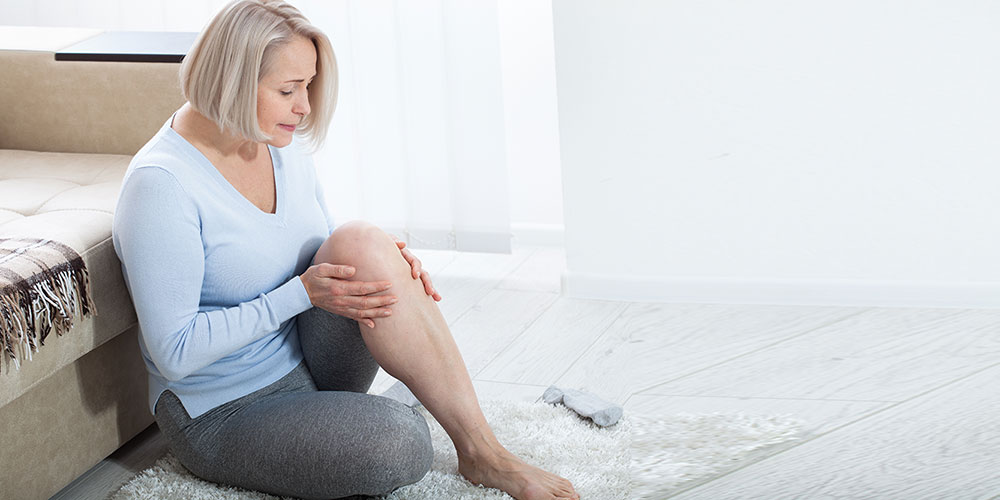Make an Appointment
Lower back pain is a very common problem: 1 in 6 Australians report having back problems, and 4 out of 5 experience it sometime in their life.
While both men and women report that they experience back problems, it is more commonly reported by people 25 years and older – Health Direct.
But did you know that lower back pain could be the direct result of tight hip flexors?
Tightness in the muscles of your hip flexors, whether from sitting for too long or running regularly for exercise, can cause lower back issues. Yet, there are ways to prevent lower back pain by stretching and strengthening your thighs, hips, and glutes.
Here, we’re talking about the signs of tight hip flexors, how tight hip flexors affect your lower back, exercises you can use to stretch and strengthen any problem areas, and how Physio Inq physiotherapists can help. Let’s get into it!
What are the symptoms of tight hip flexors?
The symptoms of tight hip flexors include pain and inflexibility in the front of your hip towards your upper thigh muscle and, sometimes, you’ll feel symptoms as lower back pain as well.
These symptoms can either be mild or rather severe and since everything in your body is connected, problems with your hip flexors can lead to a wide range of other physiological issues.
A good way to test whether or not you have tight hip flexors is to try this exercise:
- Lie flat on your back
- Bring both knees in towards your chest
- Stay a hold of your right knee as you straighten your left knee, lowering it towards the ground as far as you can
- Repeat with on the other side
If you’re unable to lower your extended leg to the ground, your hip flexors are considered tight.
Hip flexors themselves are a group of muscles near the top of your thigh at the front of both your hip joints. They connect your upper thigh to the hip and allow you to bend at the waist and lift your leg. The main muscles that make up your hip flexor include your psoas, rectus femoris, tensor fasciae latae, and sartorius.
Whether you feel tightness and pain in your hips due to overactivity, a regular running routine, sitting for extended periods, weak muscles surrounding your hip flexors, or even from emotional stress, there are many potential causes of tight hip flexors**, the most common of which include:**
- Sitting for long periods
- Regular running
- Poor core strength
- Poor form while exercising
- Structural imbalance creating a tipped pelvis
- Some sleeping positions
- Postural issues
To avoid tight tip flexors, you can do your best to avoid some of the causes listed above.
However, they’re not all completely avoidable. So, you’ll also need to stretch your hip flexors regularly and strengthen your thighs, quads, glutes, and abdominals. These preventative measures are even more important if you find yourself sitting for extended periods or you’re an avid runner.
Next, we’ll talk more about ways to stretch your hip flexors and loosen up your hip joint for more mobility and less pain in your lower back. However, it’s best to work with a physiotherapist who can offer a personalised treatment plan based on your activity level and concerns.
Are hip flexors connected to lower back?
Yes, your psoas (one of the main muscles in your hip flexor) is directly connected to your femur and your lumbar vertebrae (AKA your lower back). While lower back pain isn’t always connected to your hips, tight hip flexors can certainly cause lower back pain as well.
How do I loosen my hip flexors?
You can loosen your hip flexors by performing specific stretches and hip openers while also avoiding activities that shorten your hip flexor like extended periods of sitting or extensive running.
A few of the best stretches to help you loosen up your hip flexors include:
- Seated butterfly stretch
- Reclined butterfly stretch
- Standing hip flexor stretch
- Kneeling hip tucks
- Low lunge ( reach opposite) lizard lunge
- Pigeon pose
Seated Butterfly Stretch
- Start seated with your knees bent and the soles of your feet together. The space between your legs should make a diamond-like shape.
- Sit up tall and relax through your hips, keeping your thighs heavy and drawing towards the ground.
- Keep your hip bones on the ground, lean forward to increase the stretch.
Check out this Youtube video for instructions: [Youtube - Howcast](Youtube - Howcast)
Source: Howcast
Reclined Butterfly Stretch
- Start seated with your knees bent and the soles of your feet together. The space between your legs should make a diamond-like shape.
- Sit up tall and relax through your hips, keeping your thighs heavy and drawing towards the ground.
- Keep your hip bones on the ground, lean forward to increase the stretch.
Check out this Youtube video for instructions: [Youtube Abi Carver](Youtube Abi Carver)
Standing Hip Flexor Stretch
- Start standing with your feet hip-width apart.
- Hold onto the wall or a chair for support, bend your right knee as if you were kicking your bum and grab your right ankle with your right hand.
- Keep your hips square and work to tuck your bum to feel a deep stretch h in your right hip flexor and thigh.
- Hold for 30 seconds before switching to the other side.
Check out this Youtube video for instructions: [Youtube - Body Within, Inc](Youtube - Body Within, Inc)
Source: Abi Carver
Kneeling Hip Tucks
- Come down to kneel on your right knee with your left foot planted in front of you. Your left ankle and knees should create a 90-degree angle with your knee right above your ankle.
- Gently tilt your hips under to increase the stretch in your right hip flexor.
- Untuck your hips and repeat 10 times before switching to the other side.
Check out this Youtube video for instructions: [Youtube - Competitive EDGE Physical Therapy, INC](Youtube - Competitive EDGE Physical Therapy, INC)
Low Lunge Variations
- Start in a low lunge with your right foot forward, planted firmly in the ground and your left leg extended behind with your knee on the ground.
- Plant your hands on either side of your front leg for support.
- Press into the top of your left foot to feel a deep stretch in your left hip flexor.
For an even deeper stretch, bring your hands to the top of your right thigh, then reach your left arm up and over towards the right.
You can also try a lizard lunge variation where your turn out your right toes and bring both hands to the left side of your right foot. To go deeper, bend your elbows to lower your forearms towards the ground and relax into this deep hip opener.
Try all of these low lunge variations to loosen your hips and be sure to switch to the other side.
Check out this Youtube video for instructions: [Youtube - Sweat Green](Youtube - Sweat Green)
Pigeon Pose
- Make sure to keep your toes active in this stretch to protect your knees.
- Bend your right leg in front of you on the ground
- Extend your left leg behind you on the ground.
- Gently lower your hips to the ground and you should feel a deep hip stretch straight away.
For more, gently lower your chest over your front leg and breathe into your hip. Hold your pigeon pose for 30 seconds before switching sides.
Check out this Youtube video for instructions: [Youtube - Well+Good](Youtube - Well+Good)
Source: Body Within, Inc
How can I strengthen my lower back and hips?
To strengthen your lower back and hips, try doing exercises such as glute bridges, reclined leg raises, and mountain climbers.
These exercises work to improve your lower back and hip pain by strengthening the muscles around them, taking some of the pressure off. For example, a strong core is the key to supporting your lower back. By practising stability exercises that strengthen your core, you’ll be less likely to dump as much weight into your lower back and hips.
Glute Bridges
- Lie on your back with your knees bent and feet flat on the ground, hip-width apart.
- Press your lower back into the ground and keep your hands at your sides, palms pressing into the ground.
- Slowly lift your hips towards the sky, pressing into your heels.
- At the top, squeeze your glutes and return back to the starting position.
Check out this Youtube video for instructions: [Youtube - Physio Fitness | Physio REHAB | Tim Keeley](Youtube - Physio Fitness | Physio REHAB | Tim Keeley)
Superman
- Lie facedown with arms and legs outstretched, forehead on the mat. Your neck should be in a neutral position.
- Exhale as you slowly lift arms, legs, upper back, and head off the floor. Keep arms and legs straight but not locked. Your body should resemble a U shape with either side several inches off the floor.
- Hold this position for 5 seconds. Remember to keep breathing!
- Exhale as you lower back down. Then take it from the top.
Check out this Youtube video for instructions: [Youtube - LIVESTRONG.COM](Youtube - LIVESTRONG.COM)
Side Lying Leg Raise
- Lie down on one side, keeping your lower leg slightly bent on the ground.
- Engage your core by drawing your belly button in toward your spine.
- Raise your top leg without moving the rest of your body.
Check out this Youtube video for instructions: [Youtube - 3v](Youtube - 3v)
Source: Competitive EDGE Physical Therapy, INC
You should also work with a physiotherapist to help you strengthen your lower back and hips while loosening your hip flexors. Not only will they offer personalised exercises, teaching you the correct form to prevent injury, they can also help with postural or structural issues you might be dealing with.
In general, many aches and pains in our bodies require a holistic approach. Everything is connected. So, working with an expert who understands how your muscles and joints all work together is key to safe, long-lasting recovery.
If you’re having trouble with tight hip flexors and lower back pain, come see one of our knowledgeable physiotherapists at Physio Inq. Book an appointment at a convenient location or allow our Mobile Services to come to you. Contact us today!
Source: Sweat Green
Source: Well+Good
Source: Physio Fitness | Physio REHAB | Tim Keeley
Date Published: Monday, July 19, 2021
Date Modified: Tuesday, July 2, 2024
Locate a Women's Health
Service Near me
Get the experience & convinence you deserve to support your or a loved one's allied health needs.
Our Women's Health team are currently serving & taking appointments in the following states and regions in Australia:
Need to get into direct contact with ur Client Services team? We're all ears. Call our team directly on 1300 731 733












